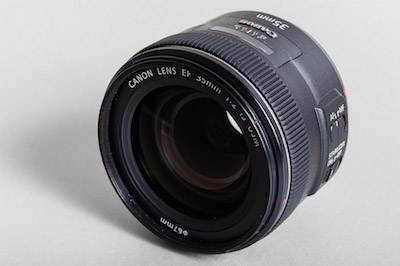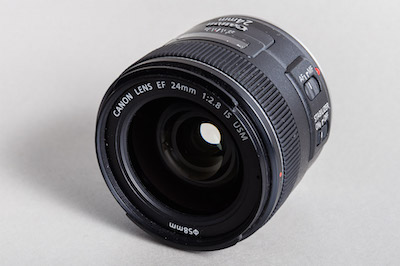Leave All That Can Be Spared Behind
We travel light. Let’s hunt some Orc. No, of course I’m not going to do that. However, I have just returned from Middle Earth, or rather New Zealand. It was my sixth visit to the country. Like on my last visit there I had a rental car for the complete trip – after 24 hours of flight, not counting the time spent on airports along the way. Having a car meant that I was able to take more luggage along than I did on my previous trips where more or less everything had to fit into a single backpack or on my bicycle. While I only went on day hikes this time, I will also discuss what to consider when tramping – which is New Zealandish for hiking – on multi-day tracks in this article.
I usually try to keep the weight of my photo equipment rather low as I don’t want to leave any valuable stuff in the trunk of my car while I am away for a complete day or even for a couple of days. One solution might be to just take a small camera – a mobile phone, a compact camera, or a mirrorless. Yet, up to this day, I can’t imagine taking anything other than an SLR camera along on such trips where I expect to make some good photos. I’m not saying that this is what everybody should do; it is just the way I like to do it.
Camera and Lenses
My camera, the EOS 6D is a middle-weight and one of the reasons why I prefer it over the 5D Mark III is exactly its weight and size. With a battery and an SD card inserted and a wrist strap that I use instead of the standard neck strap the camera weighs 790g; I will comment on strap options further down in this article. Along with the camera, I need a set of lenses with which I feel confident to be well equipped for most of my photographic purposes. I have always liked the slightly wider angle of a 35mm lens more than that of a 50mm lens, so my EF 35mm f/2 IS USM, weighing 390g including lens cap and lens hood, is the first lens to pack. It has good image quality across the field and at a maximum aperture of f/2 it is decently fast.


For landscape photography, a wide-angle lens is a great complement to this “starter kit”, although it’s not a necessity and I have done quite a few trips with 35mm as my shortest focal length. I have little need for an ultra wide-angle lens, a type of lens that you can use for stunning photos. However, I personally would use an ultra wide-angle lens rather sparingly. My EF 24mm f/2.8 IS USM (weighing 310g with lens caps and lens hood) is wide enough for most of my photos – and if it isn’t, I might take multiple shots and stitch them. That focal length is also far enough from 35mm (which is an argument against 28mm in my setup). And this lens, too, is moderately fast and has pretty good image quality, though it does show quite some vignetting.
Finally, I like to take a tele lens along which is a good idea for wildlife photography, architectural details and also for landscapes. On my previous trips, I sometimes used very light tele lenses with focal lengths of 90mm or 100mm, sometimes a 70–300mm zoom lens. I might take a prime lens, but usually I choose my EF 70–200mm f/4L IS USM; it weighs 870g with lens caps and lens hood. With a maximum aperture of f/4, this is my slowest lens, but it is still very usable. Again, image quality is very good across the field.
Second Thoughts
Of course, this choice of lenses has its downsides. First, you might want to have more flexibility in the wide-angle range by taking along a 24–70mm (or more) zoom lens. In fact, the image quality of Canon’s current zoom lenses is pretty impressive so that this is a viable alternative. And my two prime lenses weigh about the same as the lighter of those zoom lenses, the EF 24-70mm f/4L IS USM. However, my primes give me one to two stops wider maximum apertures not only for shooting in lower light but also for added creativity. Also, some of those zoom lenses struggle pretty hard regarding distortion which is less of a problem in landscapes (though it sometimes is), but even more so when photographing buildings. Finally, I like to carry my camera with attached lens in my right hand (that’s why I like the wrist strap), often for more than eight hours a day. With one of the primes attached, I am carrying a combination not too heavy and not too bulky.
Second, I sometimes wish I had more focal length for wildlife photography. However, I am not willing to carry a lens much heavier or bigger than the one I have chosen. So, basically I would have to choose a lens with a smaller maximum aperture and probably of lesser image quality as well. The EF 70-300mm f/4-5.6 L IS USM is the most massive lens I would be willing to haul around when walking a multi-day track, thus I would pay for the extra reach of the 300mm by adding 300g and losing up to one stop in aperture. If I was mainly to take wildlife photos and would only do day hikes, I might also take along an EF 100-400mm f/4-5.6L IS USM, preferably version II with its great image quality; this would however be quite a big and heavy beast. I have, however, never used this lens, and would have to see if I would really want to carry it.
Third, there may be situations where I need larger maximum apertures. For my kind of photography, this isn’t often the case – most of my photos are taken around f/8, rendering pretty good depth of field along with the best performance of my lenses. And in those few cases where a large aperture might come in handy, the high ISO qualities of my camera and the image stabilization in my lenses are usually good enough for most situations. On many occasions I also carry a tripod – though this adds considerably to the weight to carry.
Fourth, I might want to take some close-up photos. On my previous trips, I sometimes carried a macro lens. This is another good argument for the EF 24-70mm f/4L IS USM which offers a pretty decent macro mode, though you have to get quite close to your subject. Thus, on a trip where I would expect to take a lot of close-ups, I’d reconsider taking that lens along.
Finally, you might want to take along a lens wider than 24mm. Personally, I rarely miss a lens with such a short focal length but – as already mentioned – rather take multiple shots for a panorama and stitch them. This method is simplified by taking a tripod along, though you can also get pretty decent hand-held panorama shots; and stitching has become very simple in most cases with the software available today as long as you take some care when photographing and as long as you only create single-row panoramas. If, however, I was to take something wider than 24mm along with me, it would probably be the EF 16-35mm f/4L IS USM. Though I haven’t yet used this lens, it is reported to be quite good.
Lens Wrap-up
So, to cut a long story short, my preferred lens line-up for moderate-weight trips with good flexibility consists of a 35mm lens as my “standard lens”, a wide-angle lens of 24mm and a 70–200mm zoom in the tele range. For a real light-weight trip I would choose a 35mm lens along with a 100mm macro lens. There is always the alternative of just taking one zoom lens along. I had thought, the EF 24–105mm f/4L IS USM might be that one lens. So I tried it, but after a couple of weeks decided that the two of us don’t belong together. Instead, I tried the EF 24–70mm f/4L IS USM and it turned out that it and I get along quite well. So far, I have only used it on short trips, sticking with my three-lens setup for tramping.
Accessories
I have tried a number of straps for carrying the camera. For a long time, I just used the neck strap that came along with the camera or a similar strap. I never liked having it dangling from my neck, so instead I usually just wrapped the strap around my wrist, turning it basically into an oversized wrist strap. I also tried different sniper-style straps. The Sun-Sniper Backpack Strap seemed like a good idea until I tried it: It is virtually impossible to take of the backpack without major hassle. The only sniper-style strap I found worked fine was the HuGu: It’s should padding is thin enough to be worn under the shoulder straps of a backpack – at least for ligher backpacks this works fine for me. However, the solution I use most of the time is a simple wrist strap. You can read more about my strap quest here – at that time, I did not know the HuGu.
There are a few more things to take along. In my case, these are a few extra SD cards, an extra battery, a battery charger, lens hoods, polarizing filters in two sizes – my choice of lenses just requires 58mm and 67mm filters –, a remote control, and a lens cleaning cloth. I carry the extra SD cards in a waterproof box weighing another 140g. Together, this adds another 550g.
While in earlier years, in particular in the analog days of slide photography, I virtually always used polarizing filters for my landscape photos, I very rarely used them on my last trip. This was a sort of an experiment to see if I still need polarizers with the advanced possibilities of digital post-processing. I haven’t yet decided, but I guess I will take them along again on my next trip again. Many people also use (solid or gradual) ND filters. While I see the reasons for that, I find that I rarely have use for them, though occasionally I do take a long exposure during daylight where an ND filter really comes in handy. In most situations, however, I find that I can find some work-around.
There is one more thing that I don’t take along when tramping but rather leave at the hostel or in the car: an battery-powered harddrive with an integrated SD card reader. This allows me to backup the photos on my SD cards. Since I don’t take along a computer, I need some simple and light-weight solution. Among the options available, I went with a Western Digital My Passport Wireless which may not be perfect but works fine for me. I use this drive only as a backup to prevent loss of data while keeping the photos on the SD cards as well.
This adds up to almost 2.6kg which is quite a bit, but I am willing to carry this. I don’t want to suggest that my solution is the best for anyone. This article is more about the thoughts that have led to my decision. And I hope that those thoughts may help some of you out there to see where your priorities are and find a decision that works for you.
I will comment in future posts on the backpack solutions I use for day trips and also about my thoughts on tripods.
